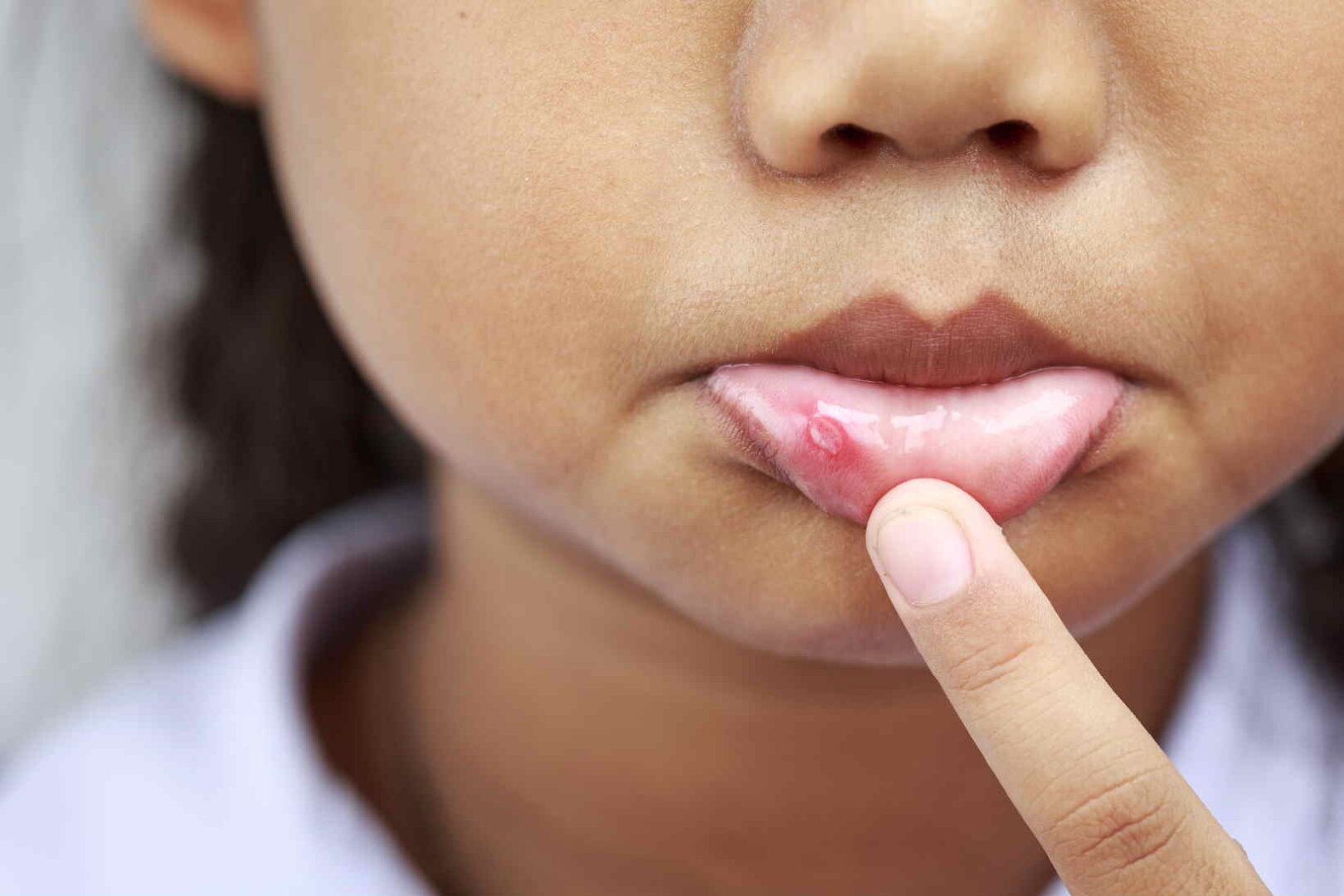Canker sores, medically known as aphthous stomatitis, are a common occurrence in the mouths of children and teenagers. These small, shallow ulcers are non-malignant, non-contagious, and not sexually transmitted, making them a nuisance rather than a serious health concern. However, the discomfort they cause can be significant, especially for younger individuals.
Appearance and Location
Typically, canker sores present as round or elongated ulcers with a yellow, white, or grey base, encircled by a red halo. They tend to appear on the softer parts of the mouth, such as the inner cheeks, the floor of the mouth, and the vestibule, often towards the front. Most canker sores are less than 10 mm in diameter, may appear in groups of up to five, and usually resolve within 7 to 14 days, though they can recur every few months.
Canker Sores vs. Cold Sores
It’s important to distinguish canker sores from cold sores. Cold sores, also known as fever blisters or herpes simplex virus type 1 blisters, are painful, fluid-filled vesicles that are highly contagious and typically found outside the mouth. In contrast, canker sores are always found inside the mouth and are not caused by a virus.
Potential Causes
The exact cause of canker sores remains a mystery, but it seems to involve an immune response mediated by cytotoxic T-cell lymphocytes, or “T-cells.” This response leads to the destruction of the mucosal lining inside the mouth. Triggers for this immune reaction are varied and may include:
- Nutritional deficiencies, such as a lack of vitamin B12 or folic acid
- Allergic reactions to certain foods, like tomatoes
- Sensitivity to chemicals, such as sodium lauryl sulfate found in some toothpaste brands
- Emotional stress
- Physical trauma or irritation from dental appliances like braces
Treatment Strategies
Since canker sores heal on their own, treatment primarily aims to alleviate pain, accelerate healing, and reduce recurrence. The pain is usually most intense in the days following the ulcer’s appearance but diminishes as healing progresses, leaving no scars. Dietary modifications can help manage discomfort, with recommendations to avoid spicy, citric, and acidic foods and drinks. Topical anesthetics may be necessary to relieve pain, and therapeutic mouthwashes can shorten the duration of the sores. In some cases, particularly for persistent or severe canker sores, a visit to the dentist is advisable.
Conclusion
While canker sores are a common and generally minor issue for kids and teens, understanding their nature and knowing how to treat them can make a big difference in the comfort and oral health of your child. If over-the-counter treatments are not effective, or if the sores are unusually large or persistent, don’t hesitate to seek professional dental advice.


